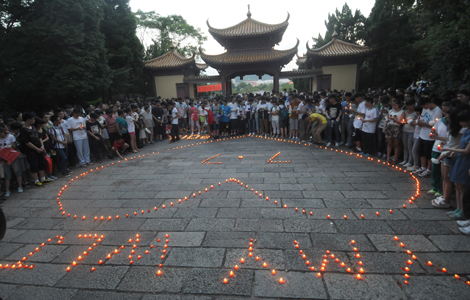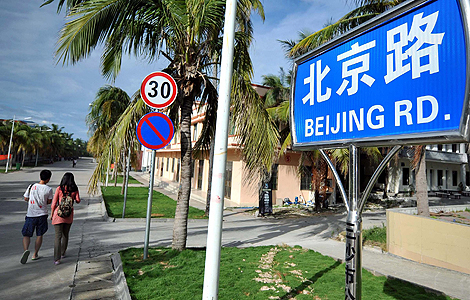
Foreign aid programs from China and other countries for Africa's development can be complementary
China's foreign aid programs have gained tremendous attention in recent times and are fast becoming a viable alternative to the traditional high-cost aid plans propagated by Western nations in Africa.
Though there are huge differences between the two aid programs, there are also similarities. The largely interventionist nature of the Western aid programs can be traced to the long traditions of belief and of politics in Europe. Attitudes toward non-Europeans have gone through various transformations, ranging from treating them as exotic cultural equals to noble savages, and then as uncivilized savages.
The prejudices toward non-European people and society and the initial commitment from the colonial powers to make the colonial territories liberal capitalist national states are the basic foundations for modern Western aid framework in Africa.
Belief systems and knowledge, as well as colonial practices toward non-European societies, also contribute to the whole gamut of the intervention-based aid industry in the West. Politically, the Western aid programs are often seen as instruments for capitalist expansion and a way of social lifestyle expansion. Socially and culturally, the programs are quite different. This is a fundamental reason why Western aid programs have floundered in Africa.
China's foreign aid programs, on the other hand, are not linked with any colonial ideas. There is a lack of a belief-based framework for intervention and also a lack of any incentives for transferring its model to other non-Chinese societies.
The relationship between China and other countries was largely based on Chaogong (respected gift to the empires) during the imperial era. The sets of Chinese social-culture norms such as "reciprocity", "clean snow in front of your own door" etc are the basic elements that influence China's current foreign policy. Current aid practices like "non-interference" and "mutual benefit" are examples of this.
Mutual benefit reinforces ownership and responsibility by the recipient countries; particularly as it helps develop equal partnership rather than tilt the scales in favor of the donor.
Non-interference aid gives recipient countries opportunities to develop their own development strategy. China firmly believes that poor countries need to have their own development strategy under their own political and social economic conditions.
Strong external intervention will also prompt the donor nation to develop its own development strategy. China's foreign aid is substantially real aid because it does not involve high consultancy and management costs for the recipient country. China's foreign aid does not require a complex project appraisal process because it considers that the feasibility of the project is something that should be the responsibility of the recipient nation.
Uneven results from Western aid programs have also raised the question of whether the aid programs can really contribute to growth and reducing poverty. In fact, the outcome of the aid programs in many developing countries, particularly in Africa, is often damaged by other factors, such as war and conflict and even corruption. Thus the Western aid programs have shifted from more economic development-oriented projects to governance and capacity building, from more tangible construction to social protection programs.
At the same time, China's foreign aid policy has also gone through many changes. The major change that the Chinese government made was the shift from more "political and social gifts" to the one that reflects mutual benefit. The business-based and joint venture-based aid project management model introduced in the 1990s in many African countries shows potential value to sustain the aid programs. China now continues to use this model in all its agricultural technology centers in Africa to explore business-oriented aid management model with its partners.
There appears to be an increasing consensus between Chinese and Western donors on the role that aid can play in promoting growth and reducing poverty in developing countries. The consensus has been strengthened since the adoption of the United Nation Millennium Development Goals in September 2000. The merger of development effectiveness and the linkage to aid significantly closes the two different aid approaches for international development. There appear to be many areas where the two different aid approaches can be complementary.
There is an increasing recognition from the Western donors that aid should support growth. China has experienced high growth, and has strong financial capacity as well as experience in providing growth-based aid programs to other developing countries.
The support extended by Western donors in the areas of governance and state capacity building will certainly complement the aid that China provides.
There is also increasing support for social development in developing countries through China's foreign aid. The lessons learnt from established donors in those areas can help China to design more effective programs.
China has significantly increased capacity building for officials from developing countries, and its experiences in tackling poverty reduction are well acknowledged. This also aligns the effort of strengthening the public service capacity of developing countries by the Western donors.
In other words, China's low-cost aid management system will certainly be a useful alternative to the high-cost Western aid programs in Africa.
The author is professor in development studies and dean of College of Humanities and Development Studies, China Agricultural University. The views do not necessarily reflect those of China Daily.
(China Daily Africa Weekly 06/14/2013 page9)








